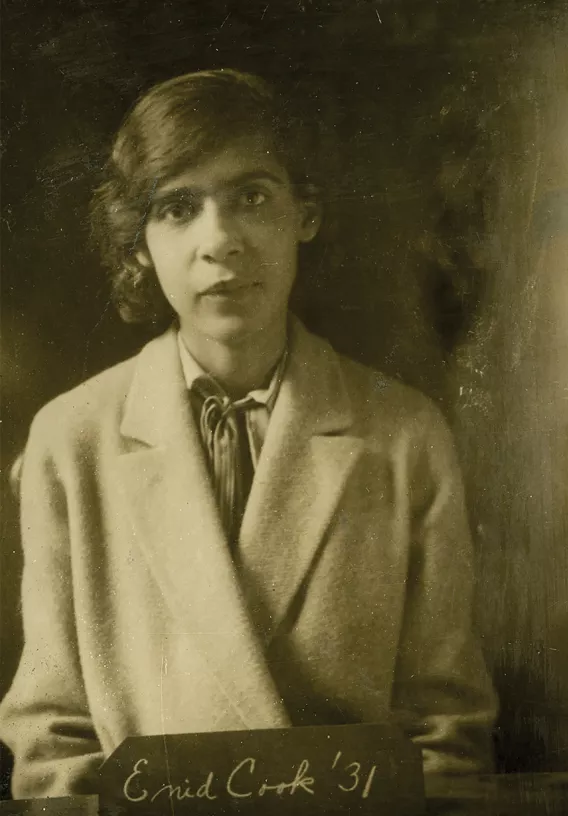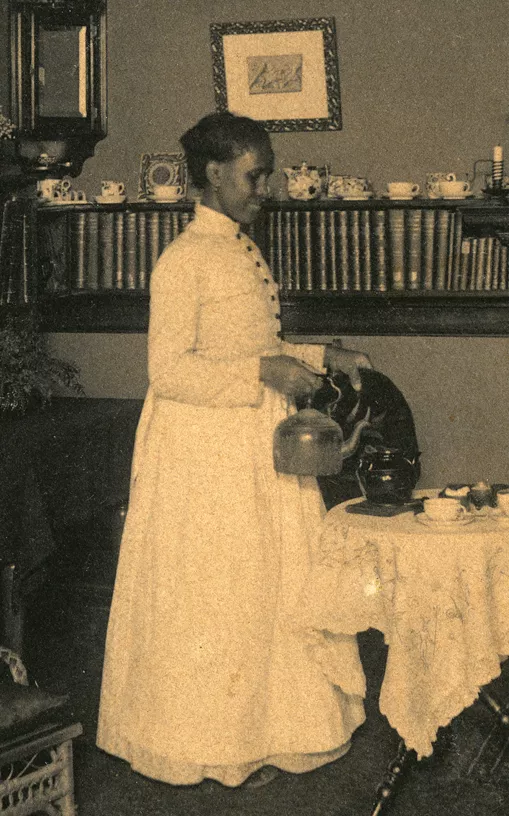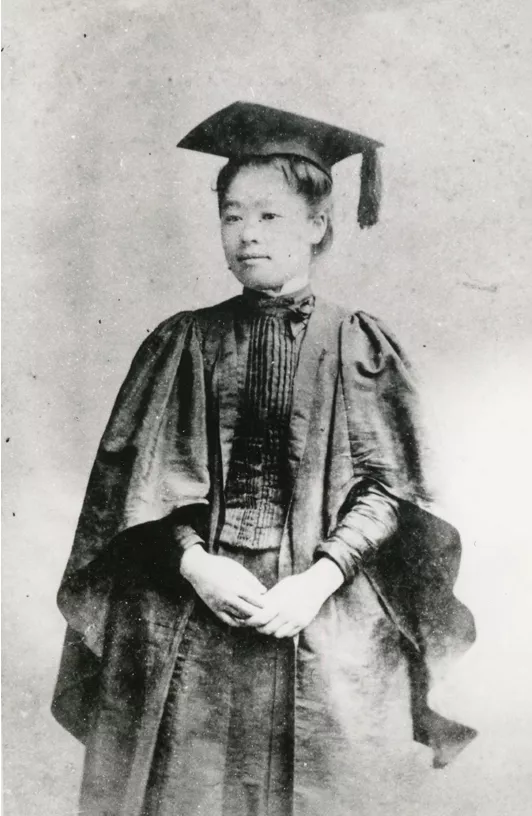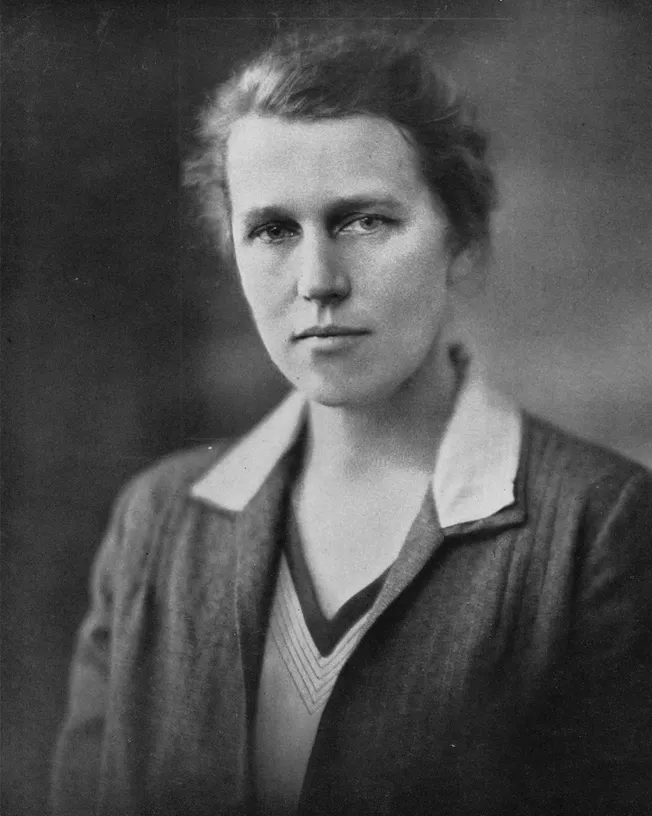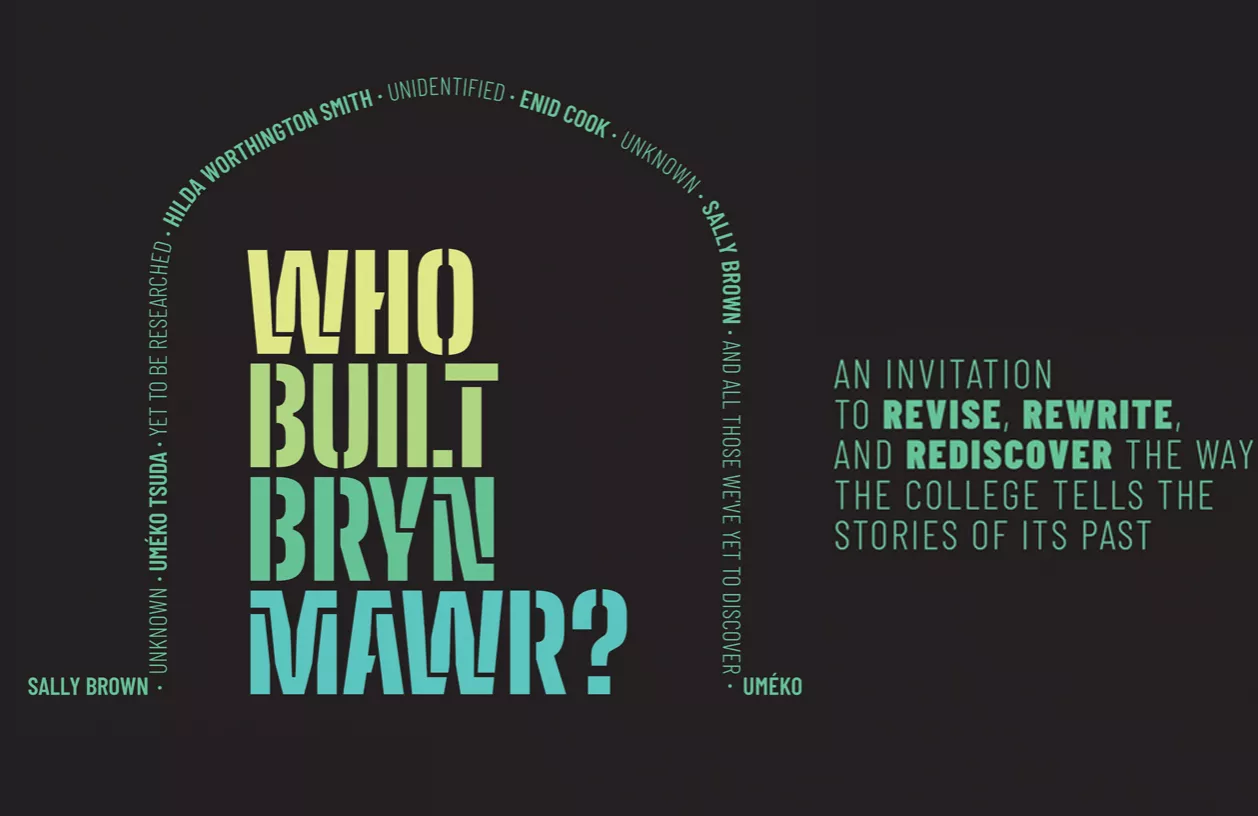
On Feb. 22, a new exhibition opened in Canaday exploring the lives and legacies of four people who shaped Bryn Mawr's history: Sally Brown, Umeko Tsuda (Class of 1893), Hilda Worthington Smith (Class of 1910), and Enid Cook (Class of 1931).
Today, thanks in part to the Enid Cook ’31 Center, most Bryn Mawr students, faculty, and staff know that Cook was the first Black student to attend Bryn Mawr. But perhaps they don't know that she became a world-famous virologist and, for many, the other individuals celebrated by the exhibit are still mysteries.
However, as the exhibition shows, when we ask the question “Who Built Bryn Mawr?” the stories of these individuals—and of so many others still untold—are essential to our history.
“The panels for the exhibition are located on four pillars in Canaday to reinforce the idea that these individuals are pillars of the institution,” says the College’s Chief of Staff Ruth Lindeborg, who has been involved with the project since its inception.
The genesis of “Who Built Bryn Mawr?” goes all the way back to 2017, when the College created a History Working Group to examine histories of exclusion in the College’s past.
Discussions and plans related to the College’s histories continued the next year with several working groups, and in the Fall of 2019 a History Advisory Committee of faculty, students, and staff was created, as was the idea for “Who Built Bryn Mawr?”
The initial exhibition is a combined effort of research done by Special Collections staff including College Archivist Allison Mills, Curator for Arts and Artifacts Carrie Robbins, Special Collections Director Eric Pumroy, student intern Emma Ruth Burns ’21, and members of the President's Office staff.
Professor of History Ignacio Gallup-Diaz works with students on this project and others in the College Archives through his Telling Bryn Mawr Histories Praxis course, and he will mentor four paid student interns this summer.
Other faculty, students, and staff interested in the project can learn more about becoming involved at an event this Friday.
“Many, many, many people built the College, and we aim to make it possible for the community to honor people of color and working-class people who are part of our past,” says Gallup-Diaz. “The goal of the project—to identify, research, and amplify the contributions made by lesser-known figures to Bryn Mawr's history—is important to both the College and to me and I'm looking forward to working with the student interns this summer.”
The making of Bryn Mawr is ongoing. Its students, staff, and faculty members continually reshape the College. How we tell the College's histories should reflect this diversity of voices and experiences. "Who Built Bryn Mawr?" is envisioned as an ongoing, collective research project aimed at telling the College's history in new ways.
This is only the beginning of a much larger project. The College is committed to this collective effort to change the way we understand our history. Visit this page to contribute your thoughts and ideas about whose stories should be told, who should be commemorated, and how.
Student Researcher Emma Ruth Burns '21 on the Project:
"It’s really important to me to know the history of the places I am, it helps me understand my surroundings and begin to feel like I know a place. I have learned this past year how it’s necessary to interrogate what I believe to be my 'understanding,' as the history I am able to interact with easily is always only a part of the story… how I interact with it is going to be very different from others due to our differing pasts and presents.
"There's an excellent group of people working on this project. They are super supportive and excited to have students working to direct the project and actively help define Bryn Mawr’s past.
"This work is important. The initiative is the outcome of years of student activism on campus in its many forms, Bryn Mawr is already and will continue to be indebted to these individuals who push the school into the future. If Bryn Mawr is to use its past as a method of looking forward, it must be a past from which we have learned lessons. It must be a past that acknowledges the wrongs perpetrated and uses all the modern tools of historical critical inquiry available to us."
History in Progress
- Learn about student work, College projects and programs, exhibitions and more on the Bryn Mawr History Projects page.
- The Bryn Mawr History Opportunities page includes information on student jobs, related courses, grants for students, faculty and staff, and other avenues of support.
Who Built Bryn Mawr? | Project Website
Event: Who Built Bryn Mawr? Introduction and Invitation | Feb. 26
